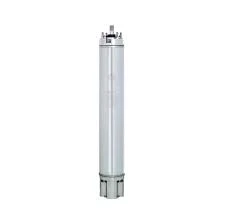Nov . 11, 2024 14:19 Back to list
what is the difference between submersible pump and centrifugal pump
Understanding the Difference Between Submersible Pumps and Centrifugal Pumps
Pumps are vital devices used in numerous applications across various industries, from agriculture to construction, making them integral to both everyday life and industrial processes. Among the many types of pumps available, submersible pumps and centrifugal pumps are two of the most commonly utilized. Understanding the differences between these two types can help in choosing the right pump for a specific application.
What is a Submersible Pump?
A submersible pump is designed to be fully submerged in the fluid it is pumping. This type of pump typically has a hermetically sealed motor close-coupled to the pump body. The submersible pump operates underwater, preventing cavitation and allowing for efficient pumping of fluids, including water, sewage, and other liquids.
These pumps are used in a variety of applications, such as draining flooded areas, sewage treatment, and agricultural irrigation. The design of a submersible pump allows it to push fluids to the surface, making it particularly effective for deep well pumping, as they can pump water from considerable depths, sometimes hundreds of feet.
What is a Centrifugal Pump?
Centrifugal pumps, in contrast, are typically designed to be installed above the fluid source. They operate using rotational kinetic energy, which is generated by the pump impeller. This impeller spins within the pump casing, drawing the fluid into the center and then forcing it outwards towards the discharge outlet, thereby creating flow.
Centrifugal pumps are versatile and widely used in various applications, including industrial processes, fire protection systems, and water supply systems. They are often preferred for applications that require the movement of large volumes of fluid at relatively low pressures.
what is the difference between submersible pump and centrifugal pump

Key Differences
1. Placement and Operation - Submersible Pump Operates submerged in the fluid, pushing it to the surface. It is well-suited for deep wells and applications where fluid must be moved vertically. - Centrifugal Pump Generally installed above the fluid source and relies on atmospheric pressure to facilitate fluid intake. It propels fluids horizontally or at a slight incline.
2. Design and Construction - Submersible Pump Encased in a waterproof housing. The motor and pump are sealed to prevent water ingress, enhancing durability and reliability when submerged. - Centrifugal Pump Features an open design, where the impeller is exposed to the atmosphere. The motor is usually located above the fluid source, requiring a priming mechanism to fill the casing with the fluid.
3. Efficiency and Capacity - Submersible Pump Typically more efficient in lifting fluids from great depths and handling large volumes of fluid at once. Ideal for applications involving sewage or slurry, where solid particles may be present. - Centrifugal Pump Generally more efficient at moving fluids with low viscosity and is best suited for applications requiring continuous flow. They may experience cavitation if not adequately primed or if operating with a low fluid level.
4. Maintenance and Lifespan - Submersible Pump Maintenance may require pulling the pump from the water source, which can be time-consuming. However, they are generally robust and less prone to wear from environmental factors. - Centrifugal Pump Easier access for maintenance; however, they may suffer wear from continual operation and require regular inspection of seals and impellers.
Conclusion
Choosing between a submersible pump and a centrifugal pump ultimately depends on the specific requirements of the application. Submersible pumps excel in scenarios where fluids must be lifted from deep sources, while centrifugal pumps are more applicable for general fluid handling tasks that do not require deep suction. Understanding their differences in operation, design, and application will enable users to make informed decisions, ensuring efficient and effective pumping solutions for their needs.
-
Submersible Water Pump: The Efficient 'Power Pioneer' of the Underwater World
NewsJul.01,2025
-
Submersible Pond Pump: The Hidden Guardian of Water Landscape Ecology
NewsJul.01,2025
-
Stainless Well Pump: A Reliable and Durable Pumping Main Force
NewsJul.01,2025
-
Stainless Steel Submersible Pump: An Efficient and Versatile Tool for Underwater Operations
NewsJul.01,2025
-
Deep Well Submersible Pump: An Efficient 'Sucker' of Groundwater Sources
NewsJul.01,2025
-
Deep Water Well Pump: An Efficient 'Sucker' of Groundwater Sources
NewsJul.01,2025
-
 Submersible Water Pump: The Efficient 'Power Pioneer' of the Underwater WorldIn the field of hydraulic equipment, the Submersible Water Pump has become the core equipment for underwater operations and water resource transportation due to its unique design and excellent performance.Detail
Submersible Water Pump: The Efficient 'Power Pioneer' of the Underwater WorldIn the field of hydraulic equipment, the Submersible Water Pump has become the core equipment for underwater operations and water resource transportation due to its unique design and excellent performance.Detail -
 Submersible Pond Pump: The Hidden Guardian of Water Landscape EcologyIn courtyard landscapes, ecological ponds, and even small-scale water conservancy projects, there is a silent yet indispensable equipment - the Submersible Pond Pump.Detail
Submersible Pond Pump: The Hidden Guardian of Water Landscape EcologyIn courtyard landscapes, ecological ponds, and even small-scale water conservancy projects, there is a silent yet indispensable equipment - the Submersible Pond Pump.Detail -
 Stainless Well Pump: A Reliable and Durable Pumping Main ForceIn the field of water resource transportation, Stainless Well Pump has become the core equipment for various pumping scenarios with its excellent performance and reliable quality.Detail
Stainless Well Pump: A Reliable and Durable Pumping Main ForceIn the field of water resource transportation, Stainless Well Pump has become the core equipment for various pumping scenarios with its excellent performance and reliable quality.Detail
